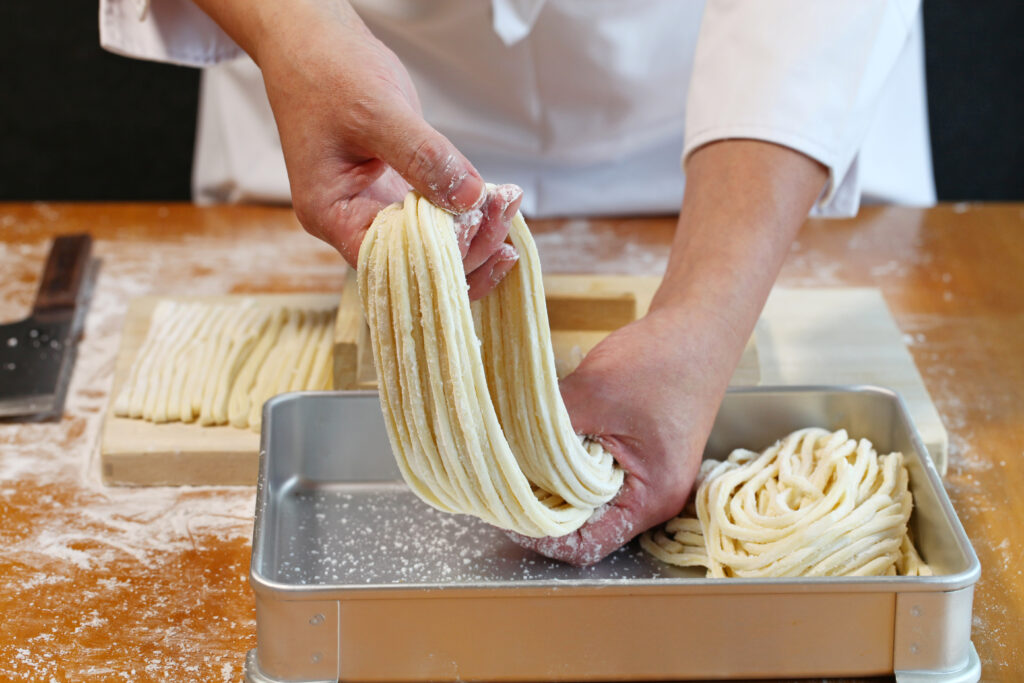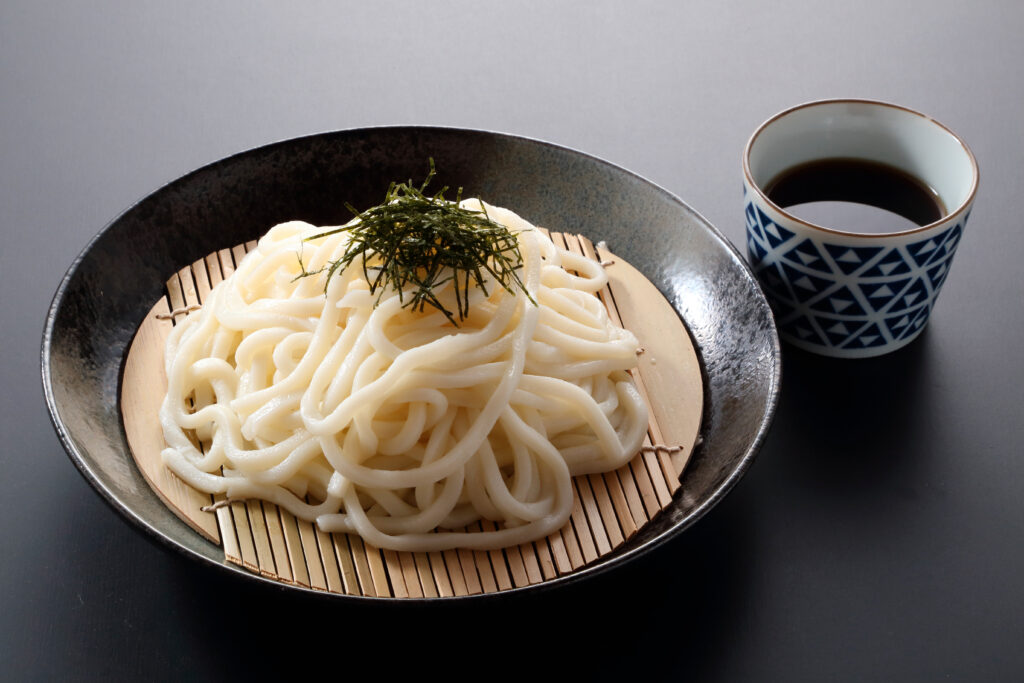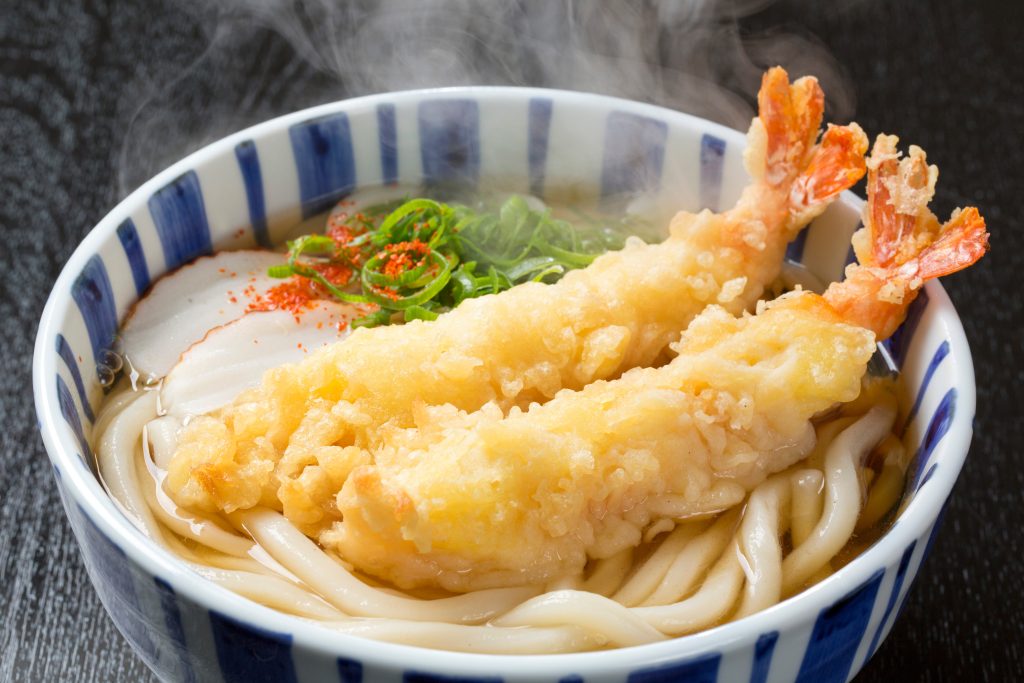The history and origins of somen and udon, traditional Japanese noodles, are steeped in a rich tapestry of cultural exchanges and culinary evolution. Various theories attempt to trace their beginnings, each offering a unique perspective on how these beloved dishes came to be.

One prominent theory suggests that the process of making somen was introduced to Japan by envoys who traveled to the Tang Dynasty in China. These envoys are believed to have brought the technique to Kami-Goto in Nagasaki Prefecture, a logical assumption given the geographical proximity. This theory gains further credibility when considering the similarities between the somen production method in Zhejiang Province’s Iwatan area in China and that of Goto udon in Japan. Additionally, the noodle-making technology in Shimabara, which played a significant role in supplying somen to Miwa Somen (a region claiming to be the birthplace of somen), has its roots in this ancient connection.
Another theory traces the origin of dumplings to a wheat-flour red bean paste confection known as “konton,” introduced to Japan from Tang China during the Nara period (710-794) by Japanese envoys. This confection is thought to be a precursor to modern dumplings.

Aoki Masako, in her “History of Udon,” discusses the Chinese origins of udon. She notes that the Chinese equivalent of wonton, written as 餛飩 (hún tún) or 餫飩 (wēn tún), shares phonetic similarities with the Japanese “udon.” This linguistic connection suggests a transformation from the Chinese dish to what is now known as udon in Japan. Additionally, the legend of Kukai, a Japanese envoy to the Tang Dynasty, is often cited as he is believed to have introduced udon to Shikoku, leading to the creation of Sanuki udon.
The Heian period (794-1185) also offers a significant anecdote. In 989, Emperor Ichijo visited Kasuga Taisha Shrine and was presented with a plate of udon called “houtou.” This event, documented in the Kou-en-ki, suggests a Nara origin for udon, as “houtou” was a sacred offering at that time.
Enji (Seiichi Kokushi), upon returning from the Song Dynasty in 1241, is credited with spreading the culture of flour-based foods like udon, soba, and steamed buns in Japan. His influence is commemorated with a stone monument at Jotenji Temple in Fukuoka City, and ancient documents like “Suima no Zu” detail the milling technology he introduced.
The evolution of cut barley from mainland China into a uniquely Japanese form is another theory explaining the origins of these noodles.
Biao Okumura challenges the notion that rice noodles with dipping sauce existed in mainland China. He argues that the Japanese Heian-period documents describe kontong as meat paste wrapped in wheat skin, distinct from udon. The first literary mention of “utom,” resembling udon, appears in the Nanboku-cho period.

By the late Nanbokucho period, the terms “udon” and “utton” were in use, as evidenced in texts like “Teikin Orai” and “Setsuyoshu.” The Edo period saw the coexistence of “udon” and “undon,” with the term “unton” frequently depicted in ukiyoe prints. The early Meiji period dictionary “Kotokai” suggests that “udon” is a shortened form of “undon.”
The theory that cut barley (kirimugi) is the precursor to udon is debated. While its thinner form and cold consumption resemble modern cold barley, it is considered a prototype for cold barley rather than udon. Onmugi and cold barley, both variations of cut barley, were collectively referred to as udon.
By the early Edo period, the modern form of udon had become widespread and popular across Japan. It’s important to note that in mainland China and traditional Chinese character cultures like Taiwan, the characters “oh-fu-mian” and “oolong-mian” are used for udon, but these are based on Japanese pronunciation and not related to the dish’s origin.
Until the mid-Edo period, pepper was the primary condiment for udon. However, as pepper cultivation increased in the late Edo period (1603-1867), it became the standard seasoning, a tradition that continues today.
In September 1940, an official price was set for udon served in cafeterias and similar establishments: 10 sen per cup for quantities of 65 monme or more. This standardization, combined with the difficulty in obtaining ingredients during that time, led to a decline in udon quality.
These diverse theories and historical anecdotes paint a vivid picture of the cultural and culinary journey of somen and udon, highlighting their deep-rooted significance in Japanese cuisine and culture.
